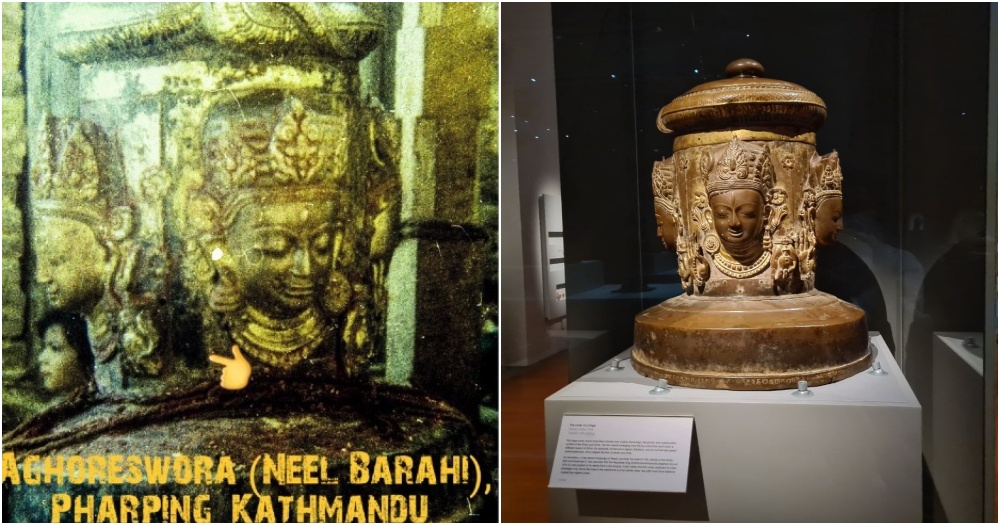Follow us on Telegram for the latest updates: https://t.me/mothershipsg
A 386-year-old Nepalese artifact that was allegedly stolen, and later found to be located at Singapore's Asian Civilisations Museum (ACM), was acquired via the National Heritage Board's "established procedures", said a museum spokesperson.
A Facebook post by "Lost Arts of Nepal", an initiative to raise awareness of lost Nepalese art in museums and private collections abroad, alleged that the religious artifact — a sculpture of the Hindu deity Shiva — was stolen from Pharping near Kathmandu more than 23 years ago.
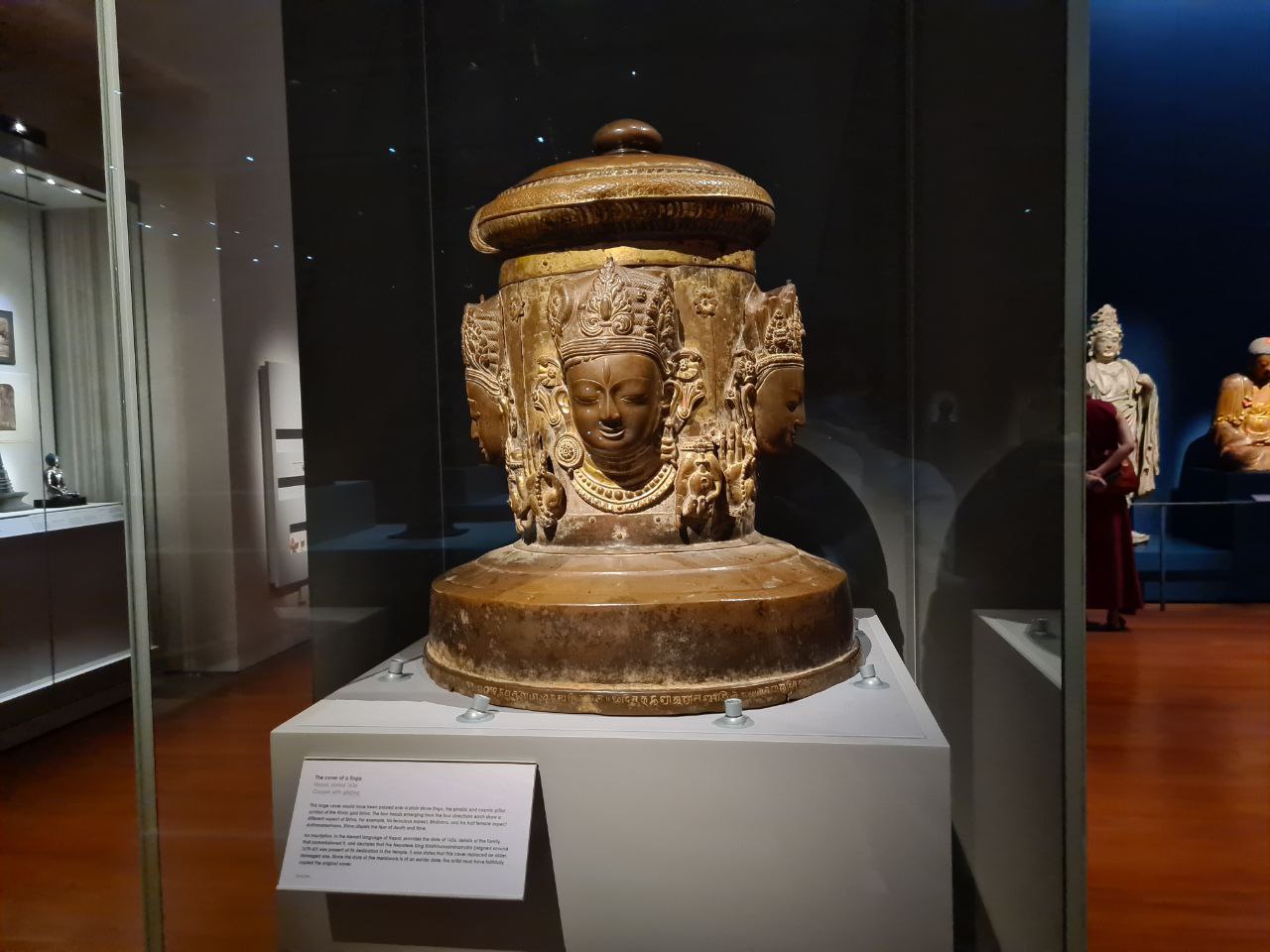 The artifact is on display at the Ancient Religions gallery at ACM. Photo by Tan Guan Zhen.
The artifact is on display at the Ancient Religions gallery at ACM. Photo by Tan Guan Zhen.
Artifact in ACM's possession has distinct missing piece
According to the Facebook page, the sculpture can be distinguished by a missing hand on one side.
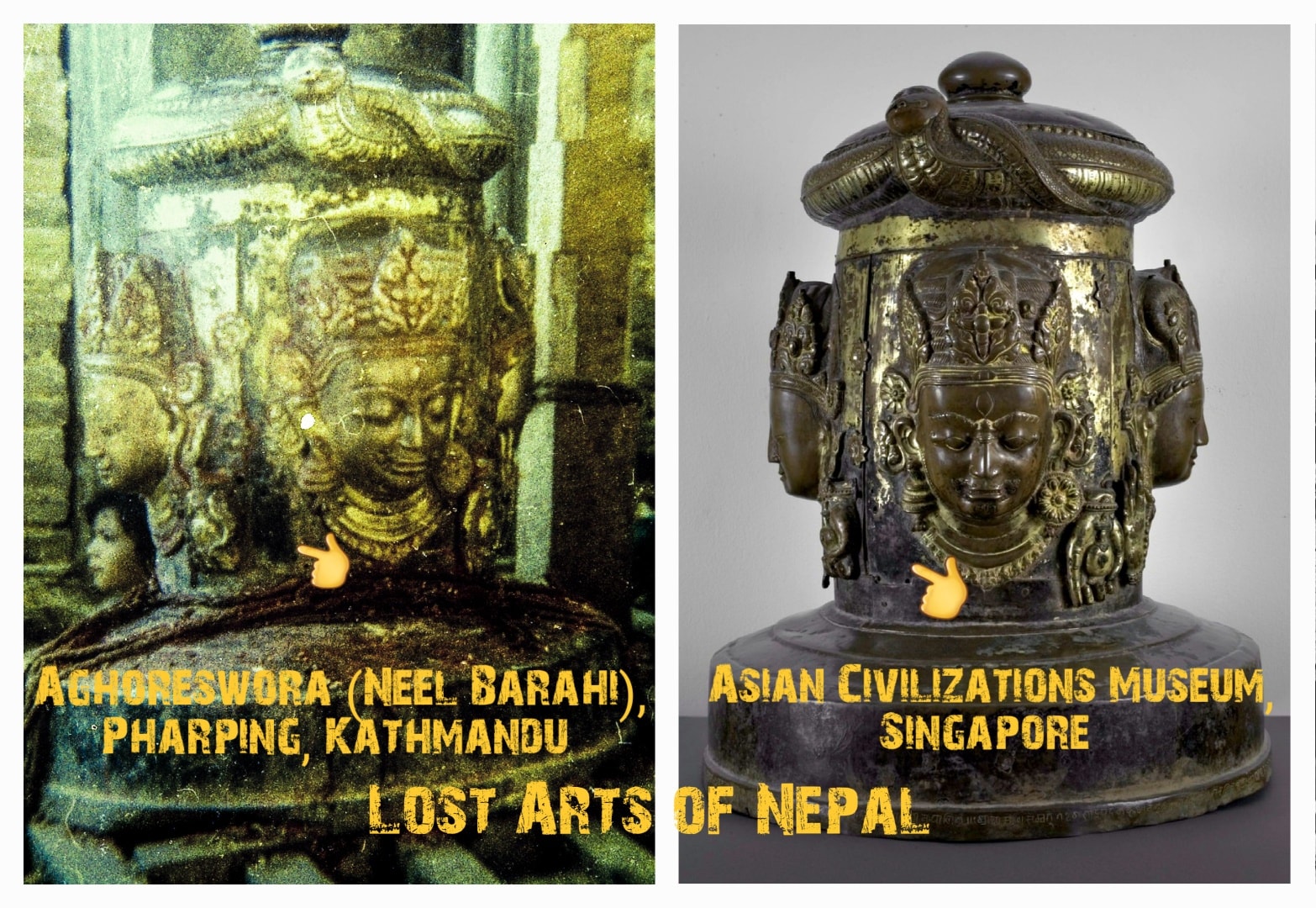 Photo via Lost Arts of Nepal/FB.
Photo via Lost Arts of Nepal/FB.
The artifact is on display at the museum, in its Ancient Religions gallery located on the second floor.
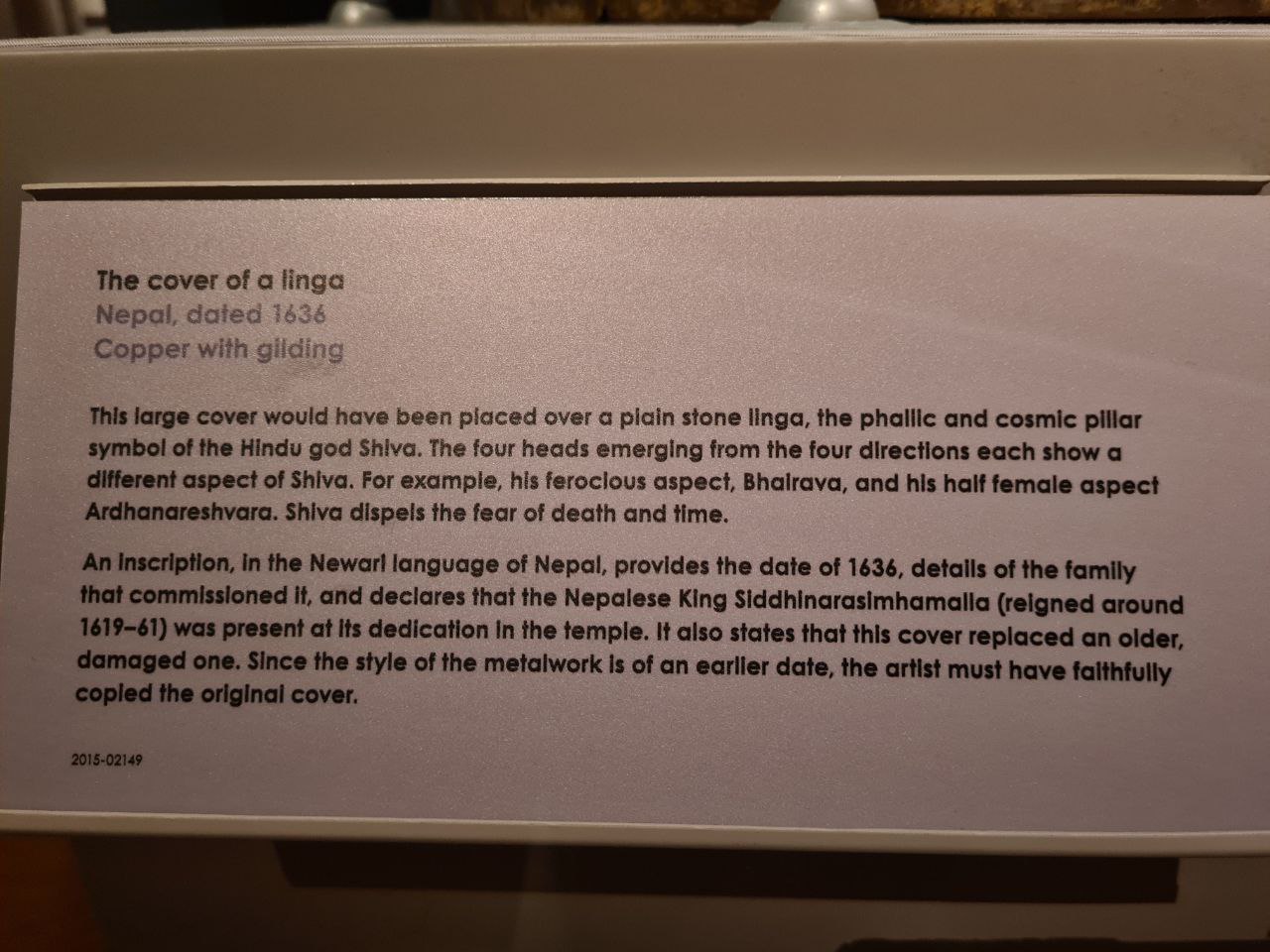 The artifact's label at the ACM. Photo by Tan Guan Zhen.
The artifact's label at the ACM. Photo by Tan Guan Zhen.
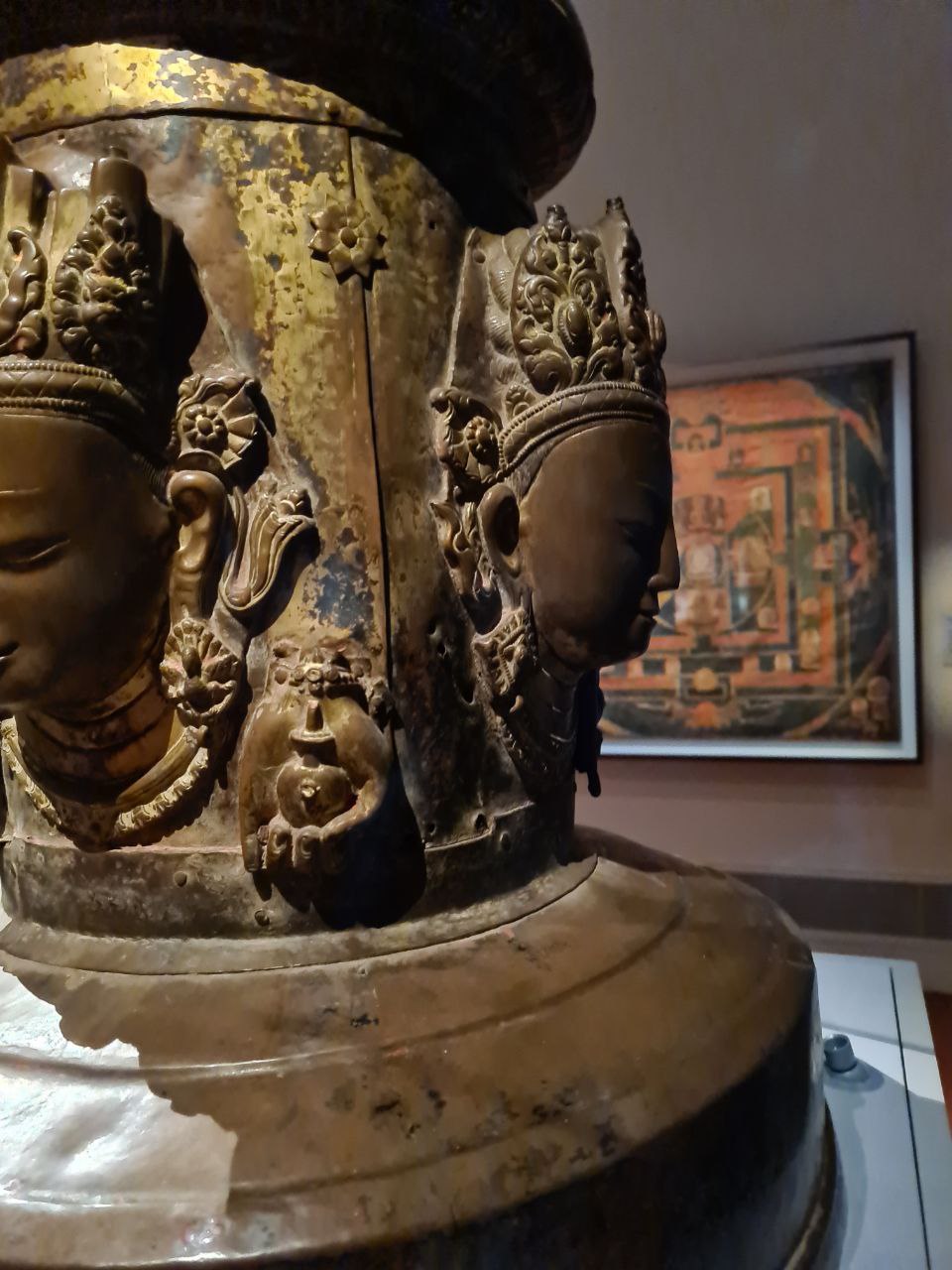 Lost Arts of Nepal said a distinguishing feature of the artifact is a missing hand on one of the sides of the sculpture. Photo by Tan Guan Zhen.
Lost Arts of Nepal said a distinguishing feature of the artifact is a missing hand on one of the sides of the sculpture. Photo by Tan Guan Zhen.
The missing part identified by the Facebook page is visible on one of the sides of the sculpture, which faces the back of its display case in the museum.
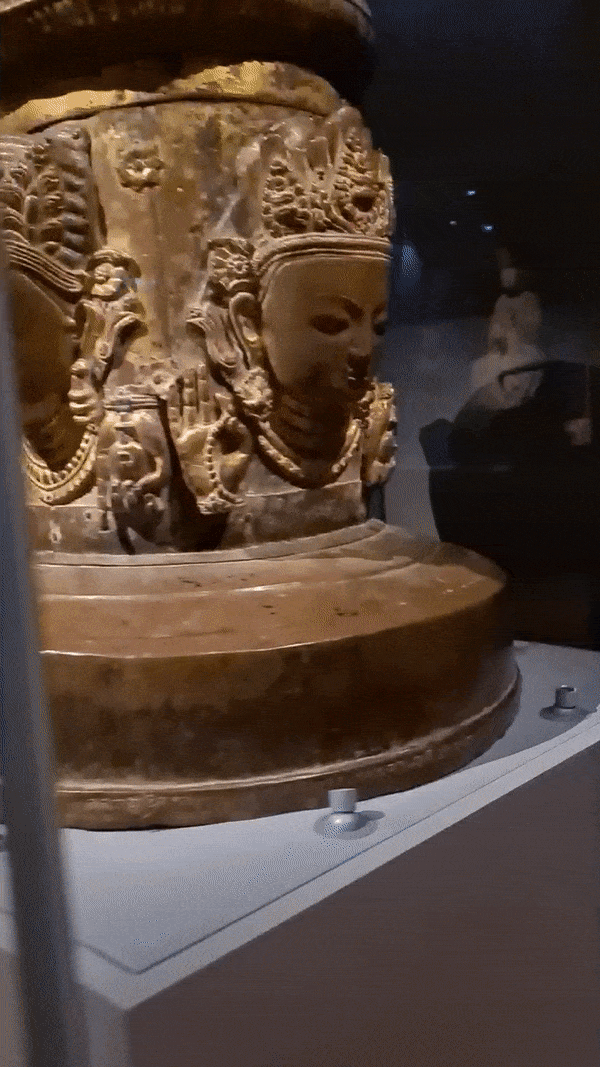 via Tan Guan Zhen.
via Tan Guan Zhen.
According to Lost Arts of Nepal, the artifact was originally from the Neel Barahi temple in Nepal, and dates back to 1636.
The artifact is of "archeological importance", reported Nepalese media The Kathmandu Post.
It explained that the artifact, which is one of seven idols of deities, is traditionally taken across the Pharping area during the annual Hari-Shankar Jatra, a centuries-old holy festival in Pharping.
However, since four of the original pieces have gone missing, the festival is now being conducted with replicas.
On June 16, 1999, this artifact in particular was allegedly stolen from the house of a caretaker, who was tasked with its safekeeping for the year, according to Lost Arts of Nepal.
The page said that it is convinced it can "prove" the artifact belongs to the community in Pharping, reported CNA.
"It's not just a piece of art displayed in a museum gallery; it's our ancestors, our guardians, our faith," it added.
Artifact acquired by ACM in 2015 using "established procedures"
In response to queries from CNA and The Straits Times, ACM said it was aware of various reports which claimed the artifact was stolen.
A museum spokesperson said the object in question was acquired by ACM in 2015 and "in accordance with the National Heritage Board's established procedures on acquisition".
It added that ACM's acquisition committee was made up of "external experts", which evaluated the acquisition of the artifact.
It also said that "rigorous provenance checks", which were benchmarked against international practices and regularly reviewed, were carried out at the time of purchase.
ACM also further noted that the object was not listed in the Art Loss Register, the world's largest private database of lost and stolen art.
ACM returned stolen artifact to India in 2015
This is not the first time ACM has faced controversy over stolen artifacts.
In 2015, ACM returned an 11th century bronze sculpture to Indian authorities, after it was revealed that the sculpture was likely stolen from a temple in Tamil Nadu, reported BBC.
ACM said in its statement then that although there was "no conclusive proof" that the artifact was indeed stolen, it took into account the confession of the New York dealer who had sold the museum the artifact.
The manager of New York dealer Art of the Past admitted to dealing in looted Indian antiquities, one of which was the 11th century bronze sculpture.
Top photos via Lost Arts of Nepal/FB and Tan Guan Zhen
If you like what you read, follow us on Facebook, Instagram, Twitter and Telegram to get the latest updates.
